Coffee, the beloved beverage of millions, holds a variety of forms that cater to different tastes and preferences. Whether it’s a strong shot of espresso or a creamy latte, each coffee drink has its own unique preparation methods and ingredient ratios. Understanding these basic coffee drinks can enhance appreciation for the art of coffee making and help individuals find their personal favorite.
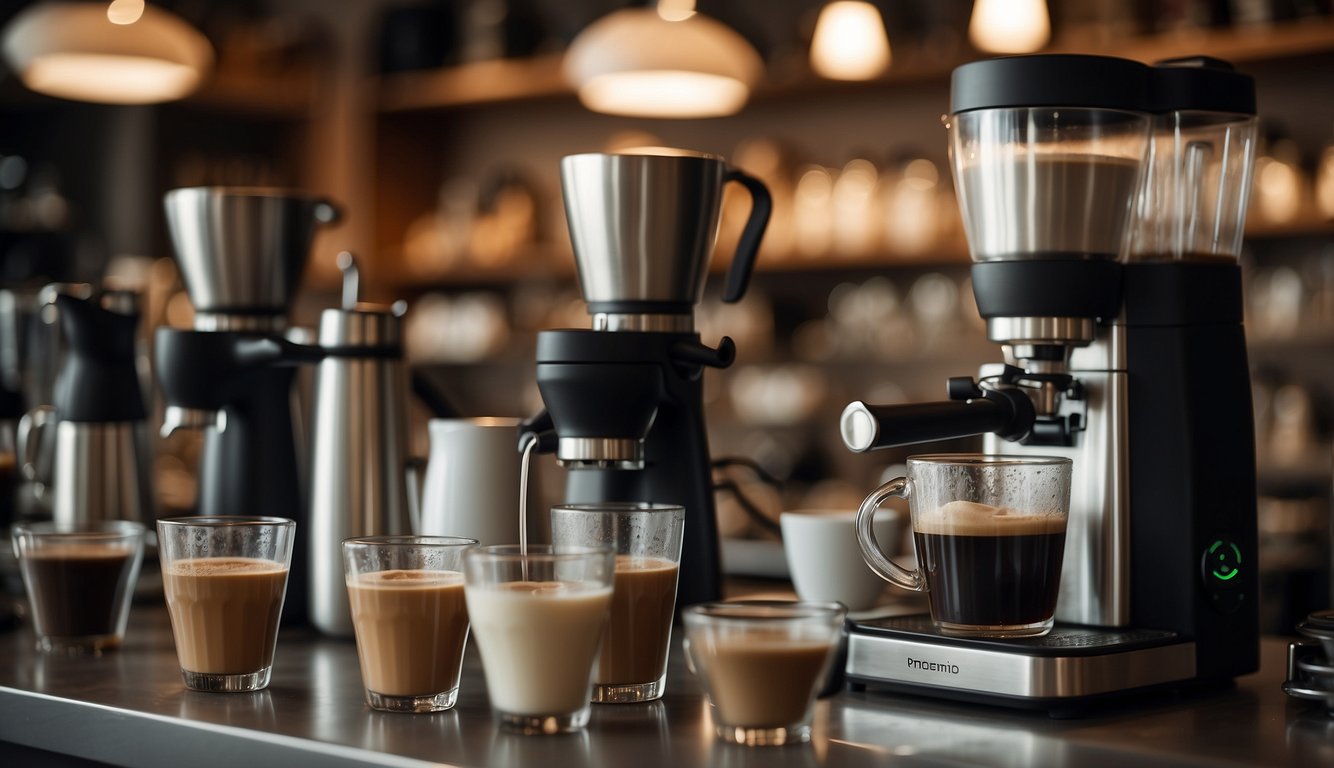
Though coffee preparation might seem complicated, it starts with mastering a few fundamental drinks that form the basis for many coffeehouse favorites. From the bold simplicity of an espresso to the chocolate infusion of a mocha, these beverages provide a foundation for both coffee enthusiasts and those new to the world of coffee.
Key Takeaways
- Coffee drinks range from strong to sweet and creamy.
- Basic coffee knowledge aids in finding one’s preferred drink.
- Mastery of a few fundamental drinks is essential for exploring further coffee variations.
Espresso
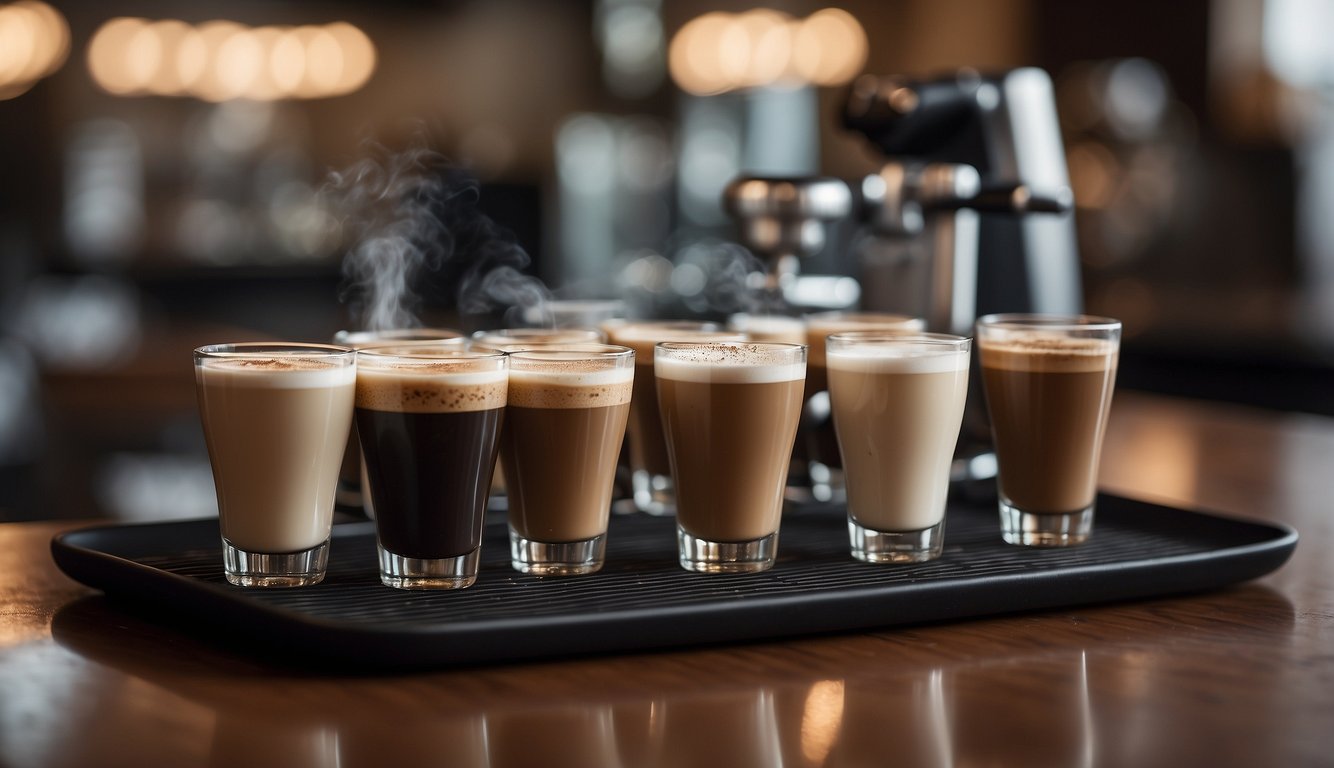
Espresso forms the foundation of many coffee drinks. It is a concentrated coffee brew made by forcing hot water through finely-ground coffee beans. Espresso is known for its rich flavor and creamy foam, called crema.
Single Shot
A single shot of espresso uses about 7 grams of ground coffee. It yields approximately 30 ml of drink, which is about 1 ounce. This serving is intense and has a complex flavor profile.
Double Shot
A double shot, also known as a “doppio,” requires roughly 14 grams of coffee. It makes about 60 ml, equivalent to 2 ounces. The double shot is popular for its strong taste and extra caffeine.
Americano
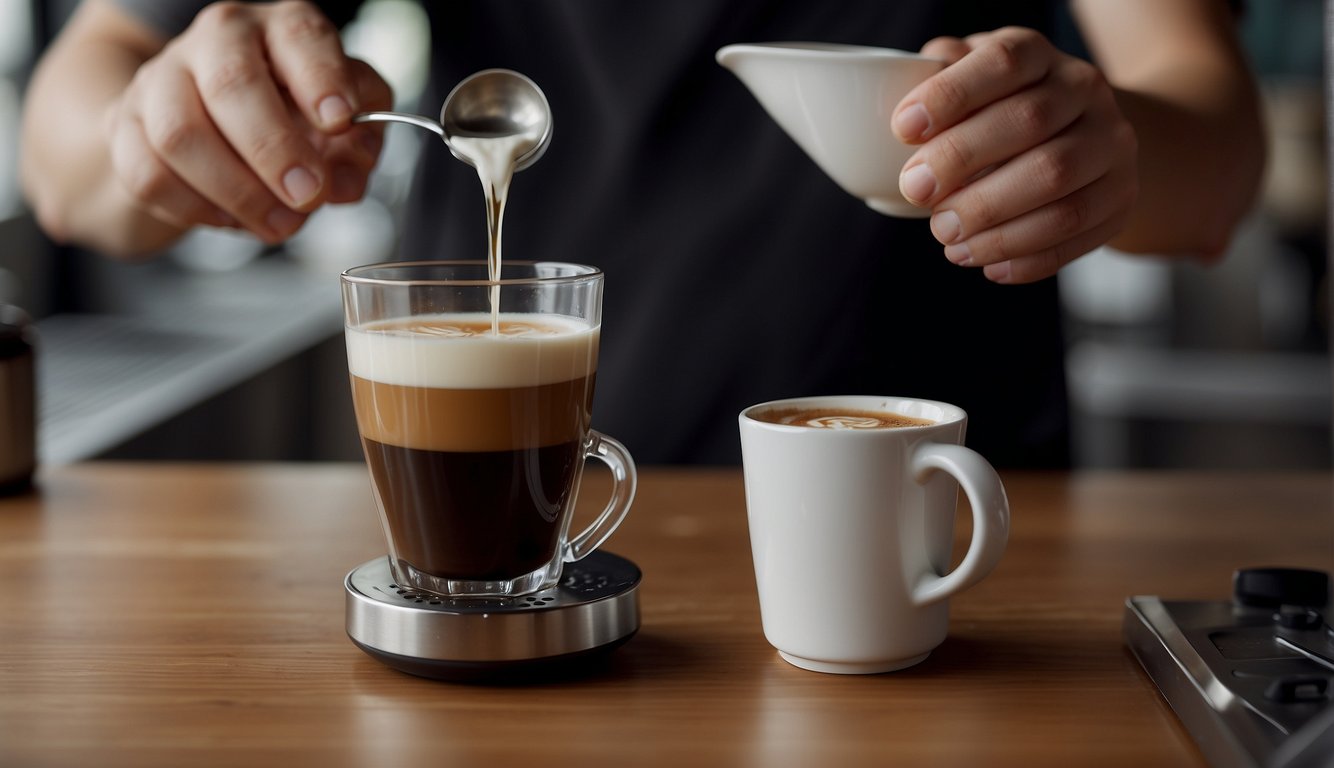
An Americano is a simple yet delightful coffee drink. It starts with espresso and then hot water is added. The ratio of water to espresso is generally about 2:1, though this can vary.
To make an Americano, one usually needs an espresso machine. First, they pull a shot or two of espresso. Then, they pour hot water over the espresso, usually around 100-150 ml.
The taste of an Americano is less intense than pure espresso. But it has a similar strength to regular brewed coffee. It’s a good choice for those who enjoy espresso’s flavor without its full intensity.
Here are the steps to make an Americano:
- Pull espresso shot(s).
- Heat water.
- Combine espresso with hot water.
It is often served in a cappuccino cup. The Americano offers a coffee experience that is both rich and smooth.
Latte
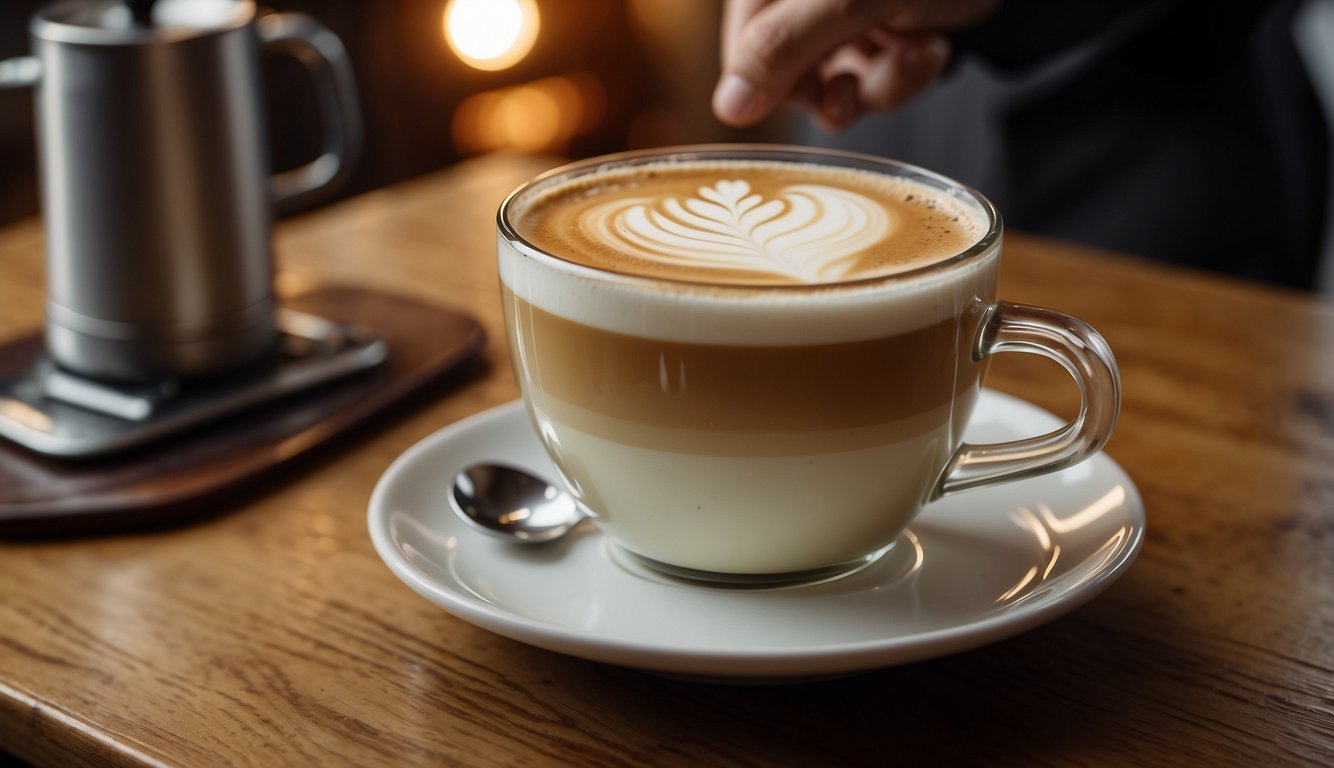
A latte is a coffee drink made with espresso and steamed milk. The ratio of milk to coffee is higher in a latte than in other espresso-based drinks, making it creamier.
Classic Latte
The Classic Latte combines a shot of espresso with about six to eight ounces of steamed milk. It’s typically topped with a small layer of foam. To make a latte, one must:
- Brew a shot of espresso.
- Steam the milk until it’s foamy.
- Pour the steamed milk over the espresso.
Flavored Latte
Flavored Lattes introduce syrups or essences to add a twist to the traditional latte. They often include flavors like vanilla, caramel, or hazelnut. For a flavored latte, one follows these steps:
- Start with a shot of espresso.
- Add the desired flavored syrup.
- Finish with steamed milk and foam, just like the classic version.
Popular choices for flavored lattes might involve drizzling caramel or chocolate sauce on top.
Cappuccino
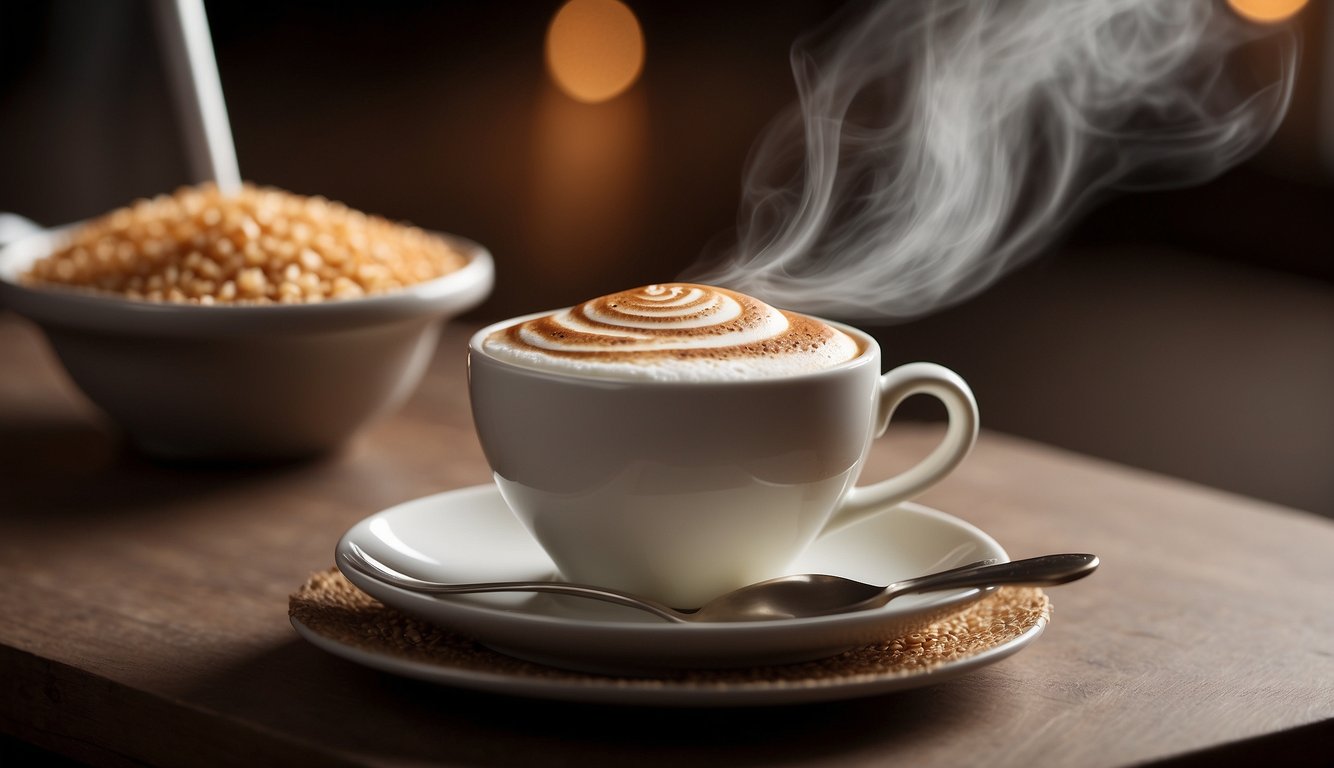
A cappuccino is a classic Italian coffee drink enjoyed by many. It strikes a delightful balance of espresso, steamed milk, and foam. The drink typically comes in a smaller size compared to a latte, emphasizing the espresso taste.
Ingredients and Proportions:
- 1/3 espresso
- 1/3 steamed milk
- 1/3 milk foam
Preparation Steps:
- Begin with a quality double espresso.
- Add an equal part of steamed milk.
- Top with a generous amount of milk foam.
The beverage is served in a special cappuccino cup, which helps retain heat. The thick layer of foam on top acts as an insulator. This keeps the drink warmer for a longer period. When made properly, the foam is creamy, not airy or stiff.
Variations may include substituting milk with cream. Some also sprinkle chocolate or cinnamon on top for extra flavor. The drink can be enjoyed at any time of the day. It is particularly popular in the morning in many parts of the world.
Macchiato
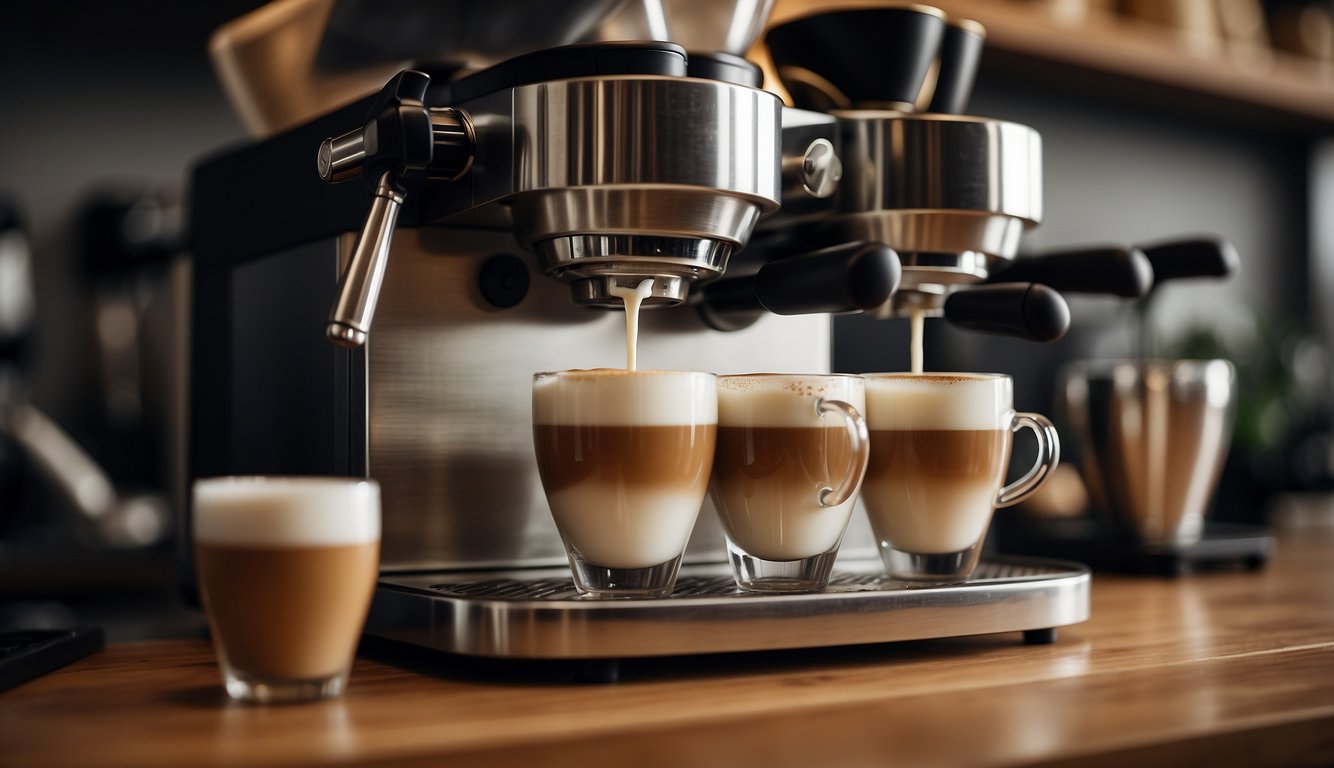
A Macchiato is a coffee drink that centers on the bold flavors of espresso. It can be prepared in two distinct styles: espresso macchiato and latte macchiato.
Espresso Macchiato
Espresso macchiato is a strong beverage that showcases a rich espresso taste. It consists of one shot of espresso marked with a small amount of frothed milk. This combination gives it a balanced flavor, not overwhelming with milk.
Latte Macchiato
Latte macchiato is milk-based and subtler in flavor. It involves a larger amount of frothed milk, into which a shot of espresso is poured. The espresso creates a “stain” or “mark” on the milk, hence its name. This drink is known for its layered visual effect and is milder compared to its espresso-dominated counterpart.
Mocha
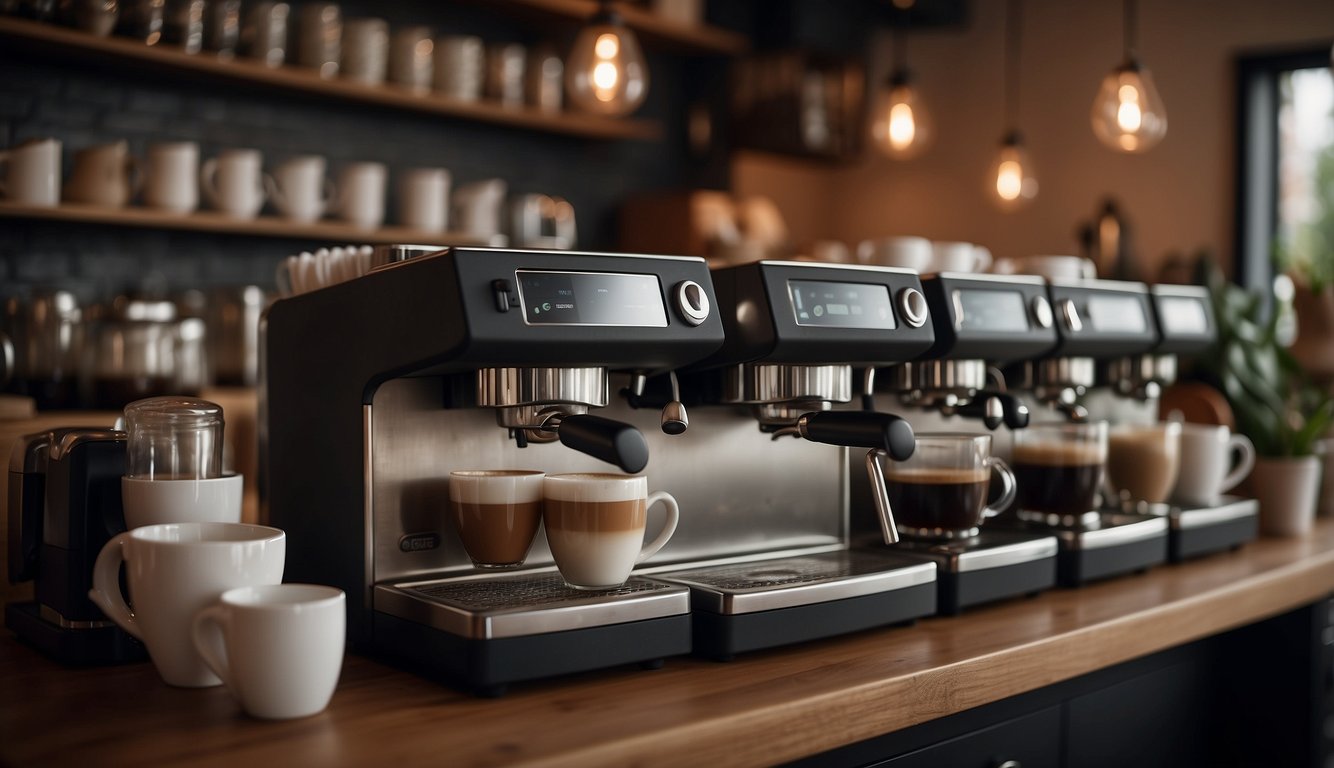
A Mocha is a delightful coffee drink that they can find in almost all coffee shops. It combines the deep flavors of coffee with the sweetness of chocolate. The typical ingredients include espresso, steamed milk, and chocolate syrup or cocoa powder.
Ingredients:
- Espresso: The strong coffee base.
- Chocolate: Syrup or cocoa for sweetness.
- Milk: Usually steamed to create froth.
Preparation Steps:
- Brew the espresso.
- Mix in the chocolate until it’s smooth.
- Add the steamed milk and stir gently.
People often top their Mocha with whipped cream or a sprinkle of cocoa powder. This drink can vary from very sweet to mildly sweet. The mocha is a suitable choice for those who enjoy chocolate and coffee flavors.
Options:
- Milk Choice: Whole milk, skim, soy, almond, or oat milk.
- Sweetness: Adjust the chocolate amount.
- Toppings: Whipped cream, marshmallows, or chocolate shavings.
They can serve the Mocha hot or cold, making it a versatile drink for all seasons. Each sip offers a well-balanced taste that chocolate and coffee lovers appreciate. The Mocha remains a classic coffeehouse beverage that combines a love for coffee and chocolate in one cup.
Flat White
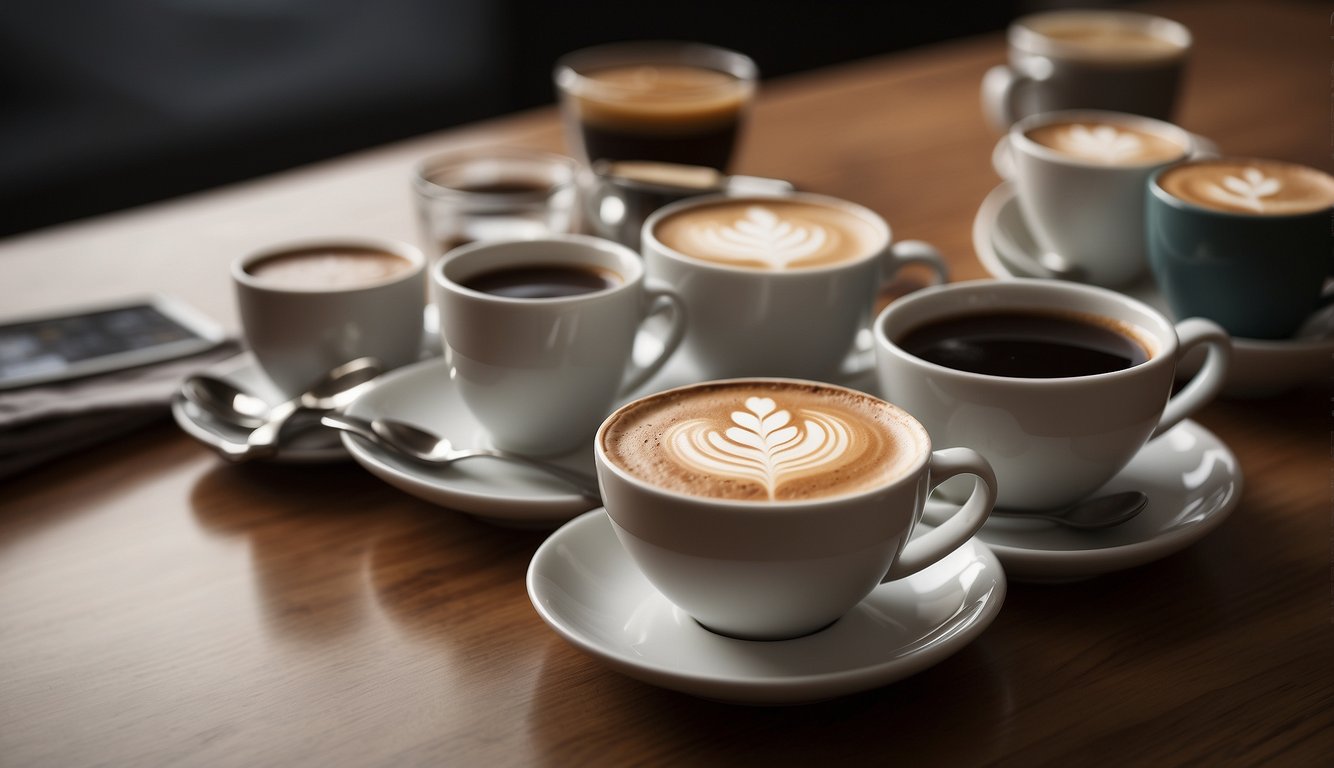
A flat white is a coffee drink that originated in Australia. It’s made with a double shot of espresso and steamed milk. The milk is steamed to create a velvety microfoam that blends with the espresso.
- Espresso: Double shot
- Milk: Steamed with microfoam
- Cup Size: Generally served in a 5.5 to 6 ounce cup
The milk should not have the thick foam found on a cappuccino. Instead, it has a thin layer of microfoam. It is important for the milk to be smooth and velvety, not airy and frothy. The craft of a flat white focuses on harmonizing the rich coffee with the creamy milk.
- Foam: Very thin layer
- Texture: Smooth and ‘velvety’
- Flavor: Strong, with a balance of milk
The beverage is characterized by its strong coffee taste, which comes from the espresso. The ratio of coffee to milk is higher than in a latte. This makes the flat white bolder in flavor. The way the milk is poured into the coffee is also crucial for a flat white. It is crafted to ensure the drink has a uniform texture and flavor profile.
- Preparation: Careful pour of milk to achieve balance
- Ratio: Higher coffee to milk
- Served: Typically in a ceramic cup
Customers looking for a coffee drink with a pronounced espresso flavor and a hint of creamy milk often choose a flat white. It offers a different experience from other milky coffee drinks due to its texture and taste. It’s a popular choice for those who appreciate the taste of espresso but prefer a bit of milk.
Frequently Asked Questions
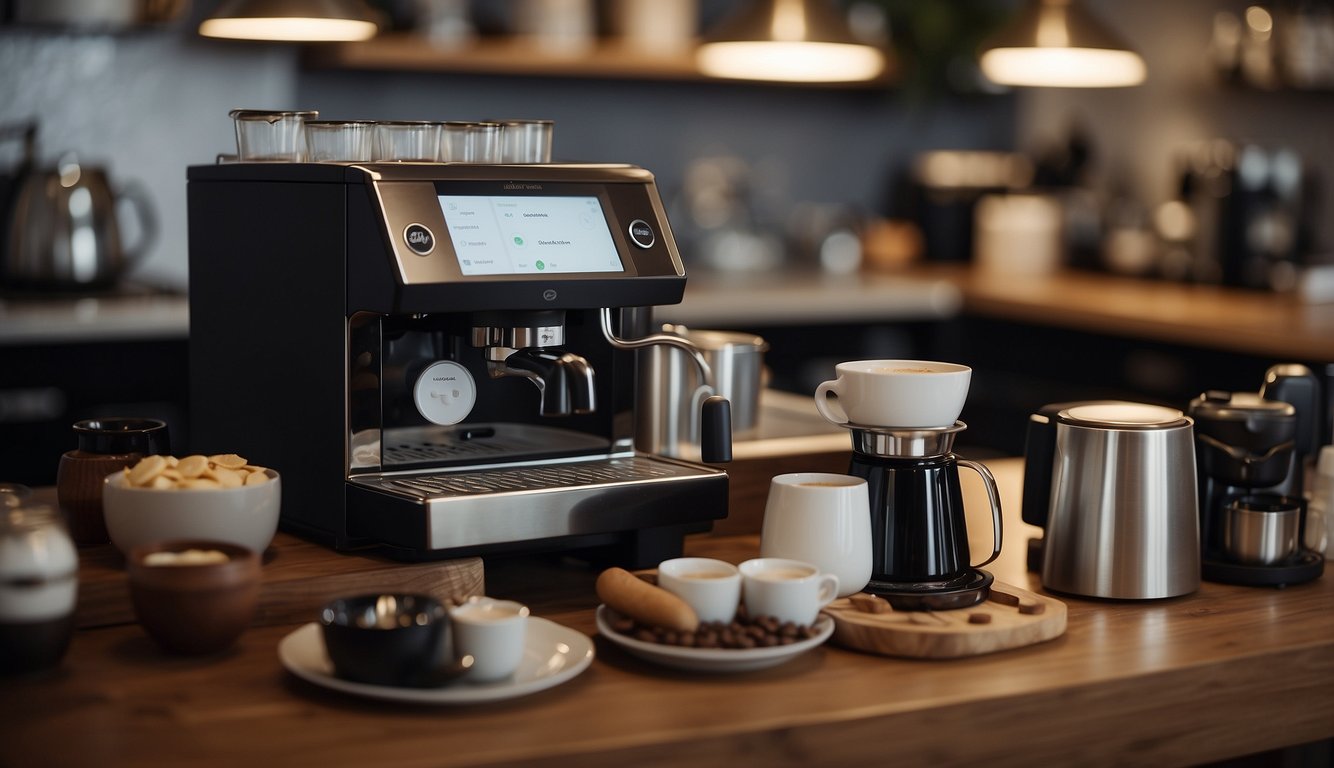
This section provides clear answers to common inquiries about basic coffee drinks.
What are the essential ingredients used in preparing the primary coffee drinks?
Primary coffee drinks use a few key components. These typically include water, coffee beans, and often milk.
How do different milk preparations vary among the basic coffee drinks menu?
The milk in coffee drinks can be steamed, frothed, or served cold. Each preparation affects the drink’s texture and temperature.
Which coffee drinks are considered classics at major coffee chains like Starbucks?
At chains like Starbucks, classics include the latte, cappuccino, and Americano. These beverages are staples on menus worldwide.
Can you provide a visual guide to help distinguish between various types of coffee beverages?
Visual guides often show the layers and proportions in drinks. They can illustrate differences between a latte and a cappuccino, for example.
What are some of the most universally recognized coffee drinks enjoyed around the world?
Globally recognized coffee drinks include espresso, café au lait, and Turkish coffee. These are cherished across different cultures.
Could you list the top coffee drinks that have stood the test of time in popularity?
Timeless coffee drinks include the espresso, latte, mocha, and cappuccino. They have remained popular for many years.










